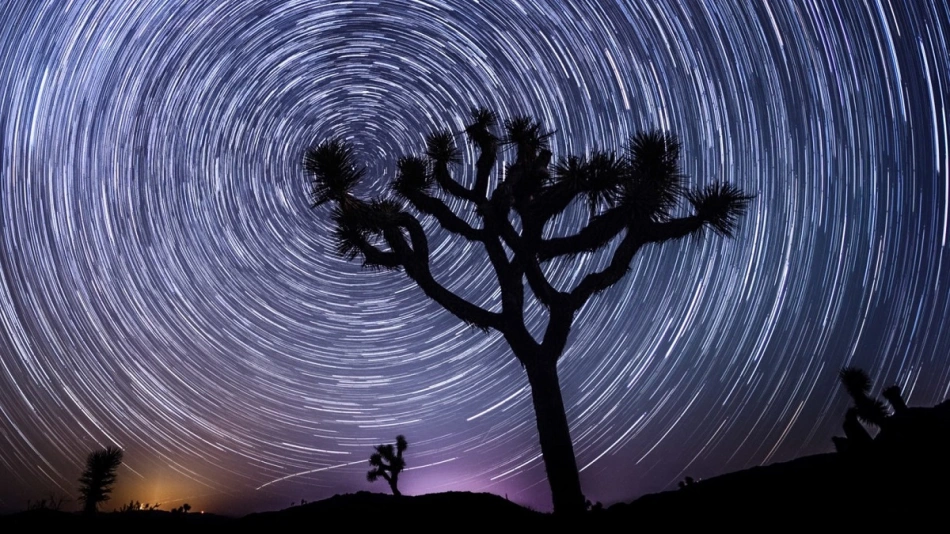About Author: –

Sunil Upasana hails from Kerala (India) and has been a Bengalurean for 17 years. He has had a deep yearning to understand the profound philosophy that underlies Hinduism Read More.
Please contribute toward the up-keeping of this website
Google Pay (sunilmv@okicici)

Normally Māya of Advaita Vedānta is believed to be representing a non-existent thing, by the easy readers of Vedanta. In fact, its meaning is different. Māya in Advaita Vedanta denotes the ‘indescribable nature of phenomenal world’. Phenomenal world is not a ‘non-existing’ thing in Advaita Vedanta[1]. But it is a reality; a relative reality for the one who realized Brahman, and Ultimate Reality for the one who did not realize Brahman.
The common man thinks that the phenomenal world is real and ultimate and there is nothing to acquire or know after that. But when he acquires Brahma-Vidya, he realizes that phenomenal world is not ultimately real, but dependent of the Brahman and so only relatively real. Brahman only is ultimately real. Brahman exists independently. So for an Advaitin, phenomenal world is not ‘non-existent’, but it is relatively real. Unless he attained the Brahma-vidya he will continue to think that the phenomenal world is real in itself.
What is meant by ‘relatively real’?
If we say that something is only ‘relatively real/relative reality’, that means that thing depends on another thing for its existence and sustenance. As an example, we know that, our body contains consciousness, and body needs oxygen, food, etc from outside to sustain the consciousness. Also, according to the environmental conditions we may lose our consciousness. So human do not have independent or ultimate existence. We depends on other things for our existence. That is, we have only a dependent or relative existence.
Thus relative is the one, which depend on another thing for its existence. Every Relative, assumes an Ultimate. This Ultimate can exist by itself without any outside support. That is why it is known as Ultimate. Theologically, a thing which has independent existence is known as God and philosophically it is known as ‘Absolute or Ultimate reality or supreme Reality’. According to Advaita Vedanta, only Nirguna Brahman is Absolute. Everything else is relative.
As per Advaita Vedanta, phenomenal world is only relatively Real[2]. Everything in the phenomenal world depends on each other and thus is essence-less and indescribable or Maya. Phenomenal world is not ultimately real, but only relatively real. Brahamn only is ultimate real.
Three levels of reality:-
There are three levels in Advaita Vedanta regarding reality[3]. They are ‘Pratibhasika’, ‘Vyavaharika’ and ‘Paramarthika’.
Of these Pratibhasika is the most unreal. Dream is in Pratibhasika level. In dream we perceive different things. But in a strict sense, dream is not completely unreal because those things, which we see, in dream, have external substratum in the phenomenal world[4]. Take the example of a sky-flower. Even though, no sky-flower exists in the world and thus it is unreal, yet, sky and flower, taken separately, are real things, that we have seen in the external world prior to dreaming. That is, we can dream of only those things which we have seen in the phenomenal world. But in dream, these real things get combined in strange and different proportions, making quite new unreal objects, in dream.
Thus what we call as dream is not the opposite of the Ultimate Reality because even in dream, elements, which have substratum outside the dream, are present. To say that the dream is unreal, we should be in waking state. We can know the unreality of dream only from the waking state. As long as we are dreaming, we won’t understand that dream is unreal. I.e., when we get a ‘higher waking knowledge’ we will understand that dream is not real and is a little below the common waking experience. But to conclude thus, we must have waking experience. As long as we remain in the dream state, we cannot comprehend the unreality of dream. While being in dream we will continue to think it as real and ultimate. But waking experience will shatter this conclusion.
In the same way, in waking state we will consider the external, phenomenal world as Real and ultimate. But when we get the ‘higher knowledge about Brahman’ (Brahma-vidya) we will realize that the phenomenal world is not ultimately real.
Vyavaharika is the relative plane of reality. This is the realm of cause-effect and human intellect works here. Phenomenal world is in this level. Everything that exists in this level depends on each other and we cannot say what their essence is. The things in vyavaharika world can be said to exist by itself from the phenomenal, relative point of view. However when a person get Brahma-vidya, the higher knowledge, then phenomenal world things are said to be an appearance. In this condition, we can say that phenomenal world exist because we see them. It can also said to be non-existing because it has no essense and it depends on Brahman for existence. Thus, since, the phenomenal objects exist and non-exist, from the ultimate viewpoint, their state of existence is said to be ‘indescribable or maya’.
In short for the one who have realized Brahman, external world is indescribable or Maya. And for those who had not realized Brahman (because of Avidya in them), external world is real, existing and ultimate; i.e., not indescribable or Maya. Dream world and phenomenal world are not in the same level of relaity in Advaita Vedanta[6]. The phenomenal world has more reality. We can comprehend the relative nature of phenomenal world only when we reach Paramartika level. Else we will continue to think, phenomenal world is the ultimate and real.
Paramarthika is the ultimate truth level. It only is ultimately real. It can exist by itself without depending on anything[7]. This is spiritual in experience and subject – object duality, cause-effect formula, etc are not here. This is beyond the realm of human intellect. Human intellect cannot comprehend this ultimate level of reality. This can be realized only by direct experience with the help of Brahma-vidya.
The Upanishads states that the nature of the Ultimate Reality, paramartha satya, can be expressed only by the word ‘Neti, Neti’[8]. This is an attempt to define something by rejecting all other possibilities on what it can be. Since the ultimate should be beyond human intellect[9], we can spoke about it only by negation statements. When we negate a particular thing, telling it is not akin to Brahman, then we are a step advanced in our attempt to define Brahman. This is almost same manner, when we negate all non-blue colors to reach to the Blue color. i.e., every negation inherit an affirmation.
Paramarthika is the Ultimate level that everyone can realize. There is no higher level than this. In this level, all plurality vanishes. Only pure monism exists. It is one without a second.
References: –
[1] Regarding the phenomenal world, from the relative point of view, Advaita Vedanta (Uttara Mimamsa) closely follows the Purva Mimamsa school and its formulation of the epistemology.
[2] Phenomenal world is relatively Real for those who has attained the Brahma-vidya. But for those who have not attained Brahm-vidya, phenomenal world is ultimately real. In this condition, they feel plurality or non-dualism.
[3] This classification has parallels in Sunyavada and Vijnanavda as follows: Samvriti, Paramartha in Sunyavada; Parikalpita, Paratantra & Parinispanna in Vijnanavada.
[4] ‘Cognitions have real substrata in the external world… and about dream-cognitions….. the external substratum is not altogether absent. In all cases there is a real substratum, though in dreams appearing under diverse conditions of time and place. What is perceived in dream is some real external objects that has been perceived previously either in this life or in some past life, or at some other time, and it is cognized in dreams either in the same context or under different circumstances’
— ‘Mimamsa-Sloka-varttika’, by Kumarila Bhatta.
[5] For him, who attained Brahman, the phenomenal things depend on Brahman for their existence.
[6] It is generally believed that Gauda Pada, teacher’s teacher of Sankaracharya, equated the phenomenal world with dream. But this is contented by some eminent scholars (Chandradhar Sharma in his ‘A critical survey of Indian Philosophy’) and in all probability, Gaudapada assigned the dream-status to the phenomenal world, from the Ultimate reality standpoint, not from the relative reality standpoint. If this is true, then Gaudapada’s doctrine is almost in line with the non-dualism of Sankaracharya, though Sankara gives more reality to the phenomenal world (vyavaharika) than the dream world (pratibhasika).
[7] On the other hand, ‘Pratibhasika’ depends on the phenomenal experience (vyavaharika) for its existence and ‘vyavaharika’, in turn, depends on ‘Paramarthika/ultimate Brahman’ for its existence.
[8] The general trend in Upanishads, is that Brahman can be denoted only by negation statements. Yet there are positive statements about Brahman also. Exa:- “This same immutable Brahman is the ultimate seer without himself being seen, is the ultimate hearer without himself being heard, is the ultimate knower without himself being known, is the ultimate intuitor without himself being intuited. There is no seer nor hearer nor thinker nor intuitor beyond him. It was in this immutable Brahman alone that ether is itself metaphysically grounded.”
[9] Refer to the chapter ‘The problem with the creation theory’ and another.
Featured Image Credit => https://medium.com/vedanta-teachings-for-the-west/non-duality-is-the-foundation-31d9b08a048c

Lovely.
LikeLiked by 1 person
The article is very helpful and interesting. Easy to read and understand. Thanks 🙂
LikeLiked by 1 person
appreciate you, great article my friend
LikeLiked by 1 person
I could understand the concept … well explained .. Thank you very much.
LikeLiked by 1 person
Hello sir,
It’s a great explanation to experience the knowledge of reality through these words. Thank you for that, and I’ve a question for you sir, where did Acharya Shankara extract these from Veda or Upanishads!? Exact verse explaining about these three sort of Reality?!
Thank you
LikeLike
Hi Shreehari Dutta,
Exact lines need not be in the Upanishads. There were many subtle ideas that were waiting for more exposition.
Vyavaharika and Paramarthika are implied in the Upanishads. See…
1. The main teaching of the Upanishads is ‘Attain Brahmavidya and Realize Brahman’.
2. The Upanishads also says “Sarvam Khalu Idam Brahman” / All this is Brahman.
Both of these statements of The Upanishads may seems contradictory because the latter says “All is already Brahman or all is ALREADY in a realized state”. Then the question that arise here is “If already is ALREADY in realized state, then, why we need to study The Upanishads and learn Brahmavidya and again realize Brahman ??”
if we read carefully into this and we can understand that nothing contradictory here actually. The above two ‘contradictory’ statements indicate that, ALTHOUGH WE ARE ALREADY IN REALIZED STATE, THERE IS ANOTHER PRINCIPLE (I,E.,… ‘AVIDYA’) THAT HIDES THIS FACT FROM US, SO THAT WE DONT KNOW THAT WE ARE ALREADY IN REALIZED STATE!
The outcome of this as follows.
1. We have a realized state, but we are not aware of it. Avidya also prevalent here — this is Vyavaharika
2. Realized state, no avidya here — This is Paramarthika.
Prathibhasika, is those which is unreal, but has its seat in Vyavaharika. There are just conceptual and thus a creation. When we see a snake in a rope… snake is not Vyavaharika, rope is vyavaharika. So we need another reality state and that is Prathibhasika. Everthing in the world mental and physical belongs to either of these three – Paramarthika or Vyavaharika or Prathibhasika.
(Buddha have clearly picked this Avidya concept and two levels of Ultimate reality, at that time)
LikeLike